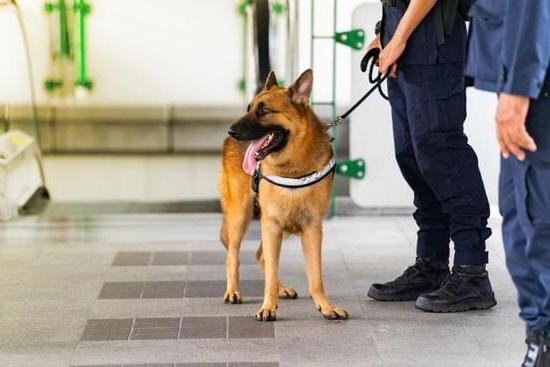If you have a dog who hates the crate, you’re not alone. Many dogs find crates to be uncomfortable and stressful. But with patience and perseverance, you can crate train your dog and make the crate a safe and comfortable place for him.
The first step is to make sure your dog is comfortable and confident in his crate. Start by putting a soft blanket or towel in the crate and giving your dog a treat every time he goes in. Once your dog is comfortable going into the crate, begin to close the door for a few seconds at a time. Gradually increase the amount of time the door is closed.
If your dog starts to whine or bark, ignore him. If he continues for more than a few minutes, you may need to go back to the previous step for a while. Once your dog is comfortable staying in the crate with the door closed, start to leave him there for short periods of time. gradually increase the amount of time you leave him in the crate.
If your dog has an accident in the crate, don’t get angry. Just clean it up and continue crate training. With patience and perseverance, you can crate train your dog and make the crate a safe and comfortable place for him.
Benefits Of Crate Training For Dogs
Crate training is a popular and efficient way to housetrain your dog, as well as to keep him safe and out of trouble when you can’t watch him. A crate can also be a place of refuge for a dog who is afraid or overwhelmed in a new environment.
When you first introduce your dog to the crate, put a soft blanket or towel in it and offer a few treats or pieces of kibble. Encourage your dog to go into the crate by placing the treats inside and praising him when he does. Once your dog is comfortable going into the crate, begin to close the door for a few seconds at a time, gradually lengthening the amount of time you leave it closed.
Never use the crate as a punishment. If you find that your dog is reluctant to enter the crate, try placing a favorite toy inside and close the door while he plays with it. Once your dog is comfortable going into the crate, you can start using it as a place to kennel him during short periods of time, like when you’re unable to watch him or when you need to run an errand.
A crate is an especially useful tool for housebreaking a puppy. When you first bring your puppy home, put him in the crate whenever you can’t watch him. This will help him get used to spending short periods of time in the crate and will prevent him from having accidents in the house.
When you’re not using the crate, leave the door open so your dog can come and go as he pleases. This will help him feel comfortable in the crate and will make it less like a prison.
The benefits of crate training are many. A crate can help housetrain your dog, keep him safe when you can’t watch him, and provide a place of refuge for a dog who is afraid or overwhelmed.
Crates For Dog Training
There are many reasons to use crates for dog training. A dog’s crate provides a safe and comfortable place for the dog to sleep, rest and eat. Dogs that are crate trained are less likely to have accidents in the house and are easier to transport.
When crate training a dog, the crate should be big enough for the dog to stand up, turn around and lie down in. The crate should never be so big that the dog can eliminate in one end and sleep in the other.
The best way to crate train a dog is to start when the dog is a puppy. Place the crate in a quiet and familiar place in the house and put a soft blanket and a toy in the crate. Initially, the dog may be hesitant to enter the crate but with patience and persistence, the dog will eventually learn to enjoy the crate.
The following are some tips for crate training a dog:
– Start by putting the dog in the crate for short periods of time and gradually increase the amount of time the dog spends in the crate.
– Do not use the crate as a punishment.
– Reward the dog for entering the crate and spending time in the crate.
– Make sure the dog has plenty of water and access to food.
– Do not leave the dog in the crate for more than eight hours at a time.
How Do You Crate Train Your Dog
?
The first step in crate training your dog is to introduce them to the crate. You can do this by placing the crate in a room where your dog spends a lot of time, putting a few treats inside, and letting your dog investigate. Once your dog is comfortable with the crate, you can start using it as a place for them to sleep.
To crate train your dog, put them in the crate for short periods of time and gradually increase the amount of time they spend in the crate. Make sure your dog is comfortable and has access to water and a bathroom break. If your dog is having a hard time adjusting to the crate, try putting a toy or treat inside to make them more comfortable.
Crate Training A Shelter Dog
One of the most important things you can do when you adopt a dog from a shelter is to crate train him. A crate is a small space that provides a dog with a sense of security and privacy. Dogs who are crate trained are less likely to have accidents in the house and are more comfortable when left alone.
The first step in crate training a dog is to get him used to the crate. Place the crate in a room where the dog spends a lot of time and put some of his favorite toys and treats in it. Let the dog explore the crate on his own and don’t force him to go inside. Once the dog is comfortable going into the crate, you can start to use it as a place to confine him when you’re not home or when you don’t want him to wander around the house.
When you’re crate training a dog, it’s important to make sure he always has access to water and that the crate is big enough for him to stand up and turn around in. Don’t leave the dog in the crate for too long, and always take him outside immediately after he’s been in the crate so he can relieve himself.
Crate training a dog can be a lot of work, but it’s worth it in the end. A crate-trained dog is a happier, more obedient dog who is less likely to get into trouble.

Welcome to the blog! I am a professional dog trainer and have been working with dogs for many years. In this blog, I will be discussing various topics related to dog training, including tips, tricks, and advice. I hope you find this information helpful and informative. Thanks for reading!





